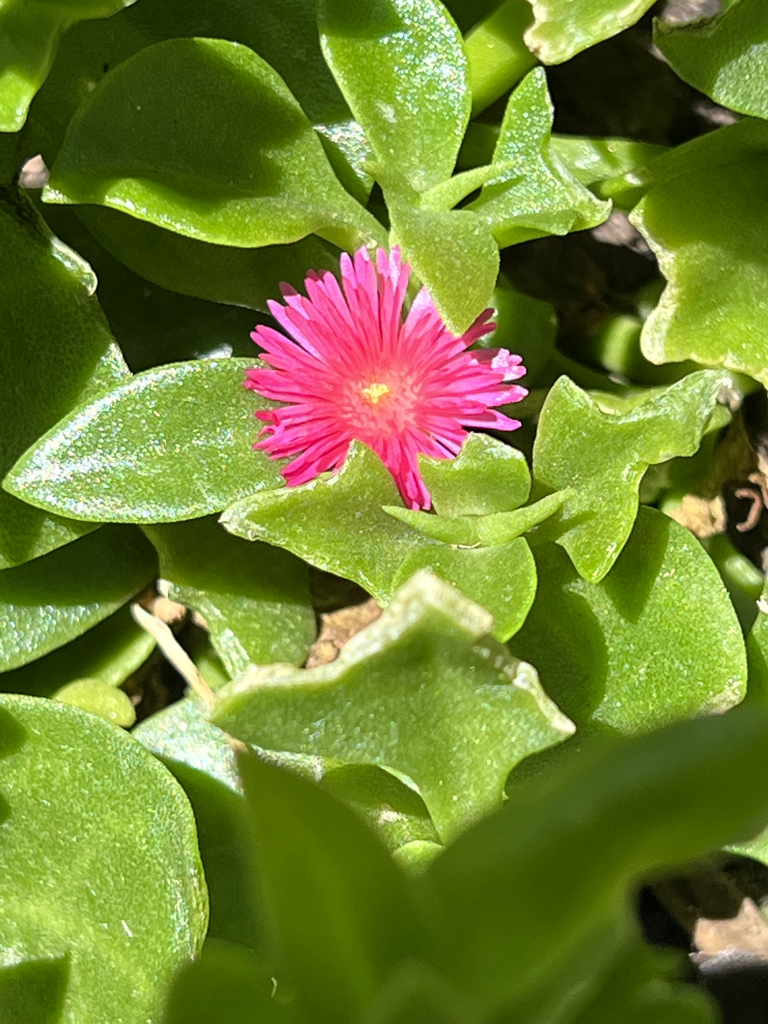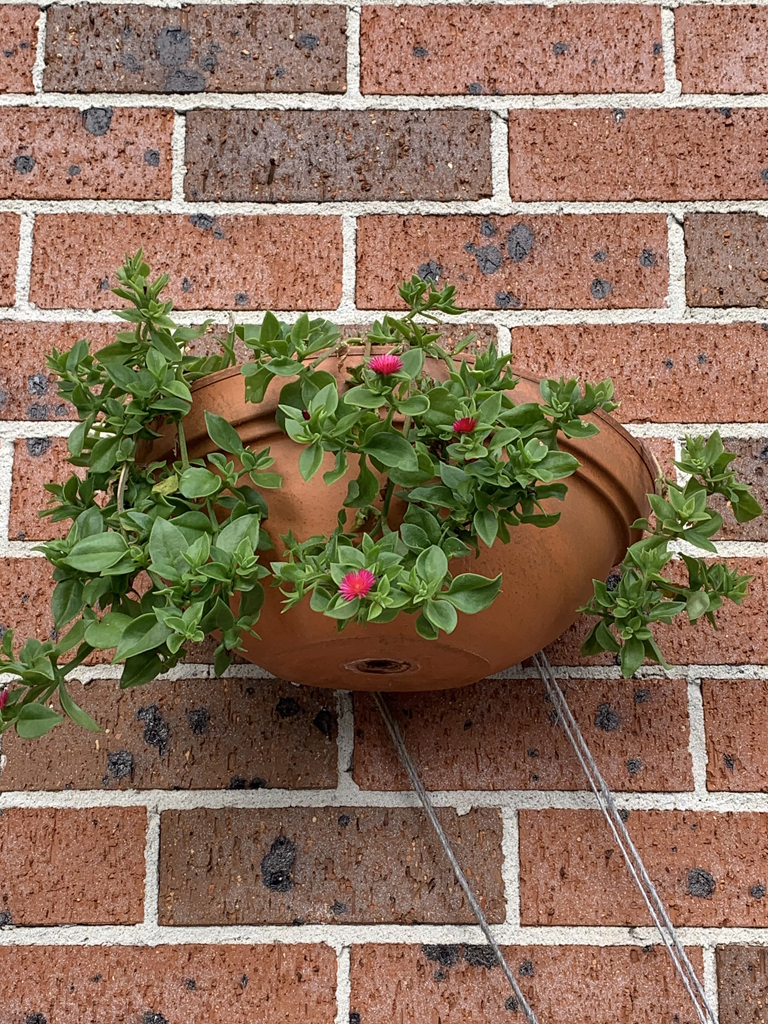Baby Sun Rose is an edible succulent in the ice plant family with vibrant blooms that attract bees and pollinators.

Baby Sun Rose – Photo © The Gourmantic Garden
Once upon a time, long before I knew anything about gardening, I was walking to my local beach and took a shortcut down a steep hill past a bush area. A sprawling succulent-looking plant with fleshy leaves and bright fuchsia flowers caught my eye. It spilled over the road and I could have easily trampled on it. I rescued a small piece off the road and after a swim and a walk back home, I stuck it in my sandy, nutrient poor soil in a bare section of my garden.

Fleshy Leaves – Photo © The Gourmantic Garden
I may have watered it once or twice and in no time, it grew and spread in a manner you would call ground cover. Flowers soon followed and so did the bees. By the end of summer, the plant has taken over a part of my garden that is now occupied by three raised garden beds. Eventually I pulled it out, and many years later I somehow regretted it. So I went on the hunt for the plant but it was nowhere at the original site. Then one day, I spotted it in front of a house with a SOLD sign, yellow, shrivelled and the size of my thumb. I took it home, put it in a pot with other succulents and with a little water and care, it spread and trailed from the pot.
According to wikipedia, Baby Sun Rose (Mesembryanthemum cordifolium) was formerly known as Aptenia cordifolia, a species of succulent plant in the ice plant family (Aizoaceae). The evergreen perennial plant is also known as heartleaf iceplant and has thick, heart-shaped glossy leaves.
How to Grow Baby Sun Rose

Baby Sun Rose – Photo © The Gourmantic Garden
When it comes to growing baby sun rose, I’m tempted to say, “take a cutting, stick it in soil and forget it”. It’s that easy and it’s a low maintenance plant ideal as ground cover. Choose a location that is in full sun or part shade and plant in well-drained sandy soil. The succulent has shallow roots so although it grows and spreads fast, it is easy to remove should it outdo its welcome.
Water occasionally and allow the soil to dry out a little in between. Like most succulents, too much water can lead to root rot. Fertilising is not usually required as it thrives on neglect but I do give it the occasional seaweed tonic in summer if it looks a little sad.

Spotted Turtle Doves – Photo © The Gourmantic Garden
Baby sun rose is relatively pest and disease free. However, birds love munching the leaves. Many times I’ve caught my pigeons and spotted turtle doves making their way towards it and pecking at the leaves. It could be the water content they’re after or the taste. I wish they could tell me.

Growing in Terracotta Half Moons – Photo © The Gourmantic Garden
Ideal as a ground cover, it can be grown in containers and hanging baskets to make use if its trailing habit. I have it growing in various locations including terracotta half moons suspended from a brick wall.
EAT IT
One of the surprising discoveries I’ve learned recently was that baby sun rose leaves and flowers are edible. It has a subtle flavour of sour, green apple and is best served raw. Now that it’s flowering, I’ll be using the vibrant blooms in cocktails.
Want to Know More?
You’ll find more information on how to grow 50 botanicals, which varieties to try, how to pair them with food and spirits, and how to use them in cocktails including a full recipe in my 260+ page digital book GROW YOUR OWN COCKTAIL GARDEN available now.


